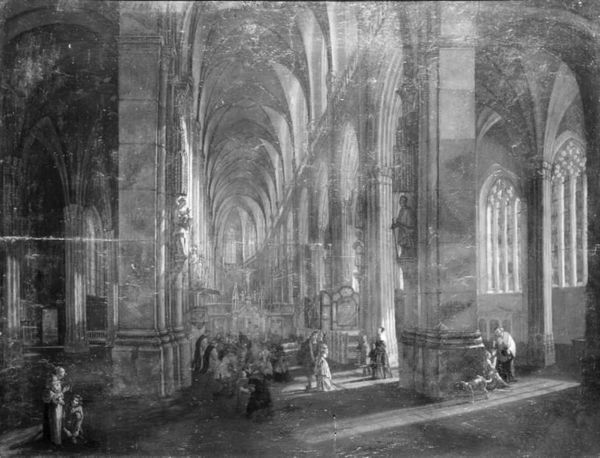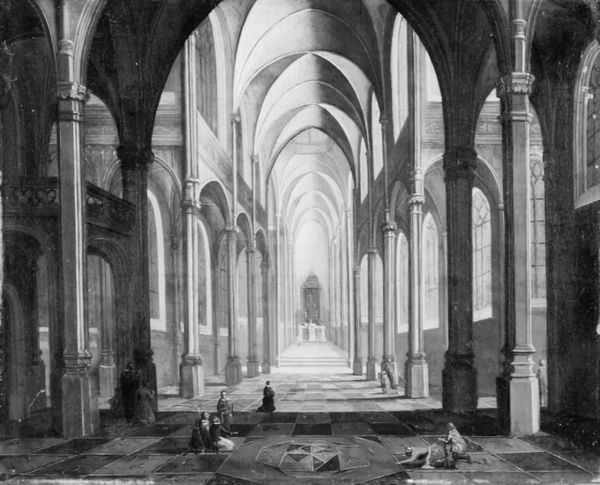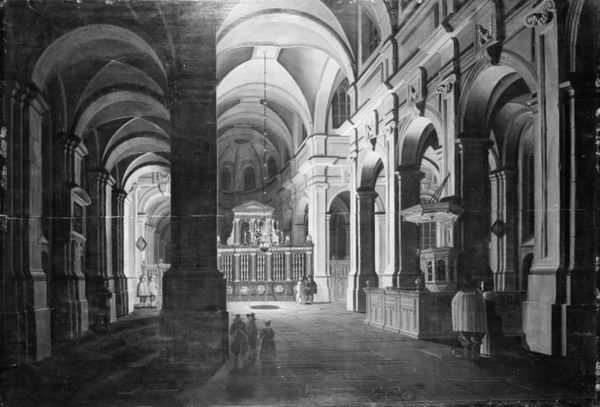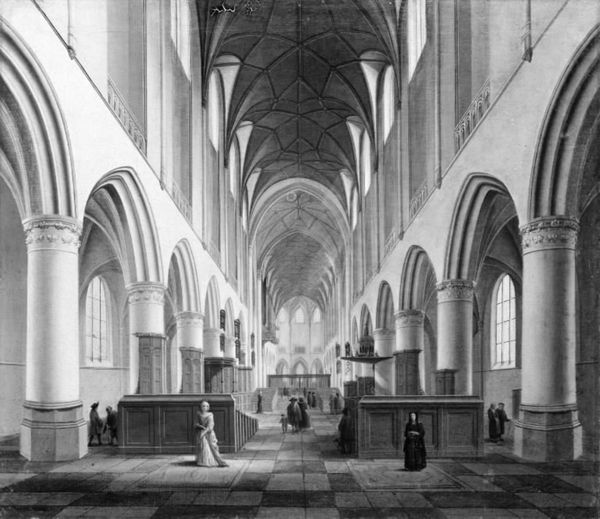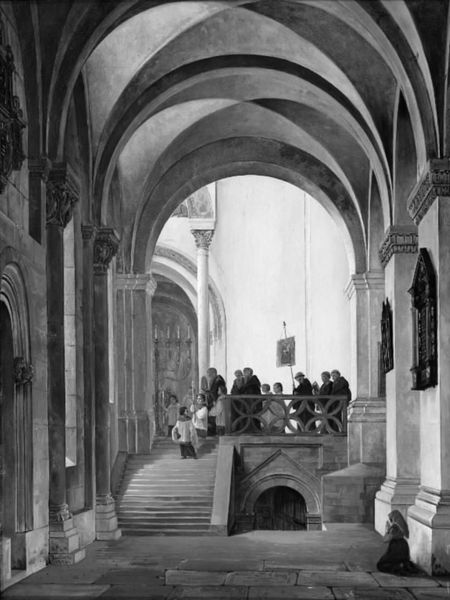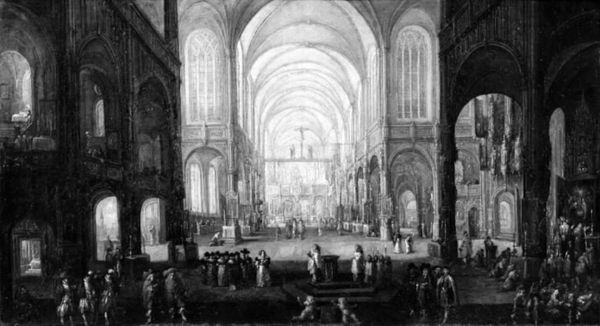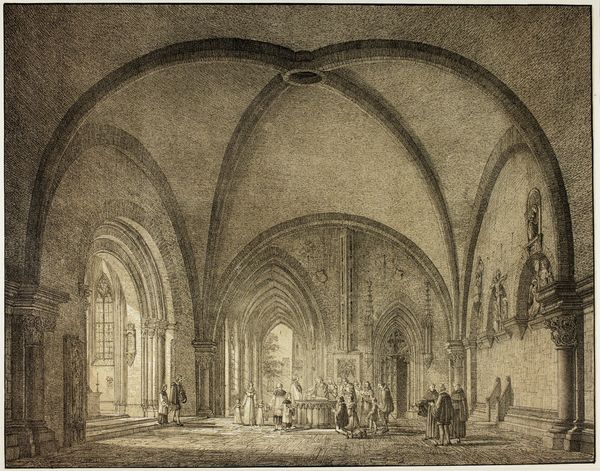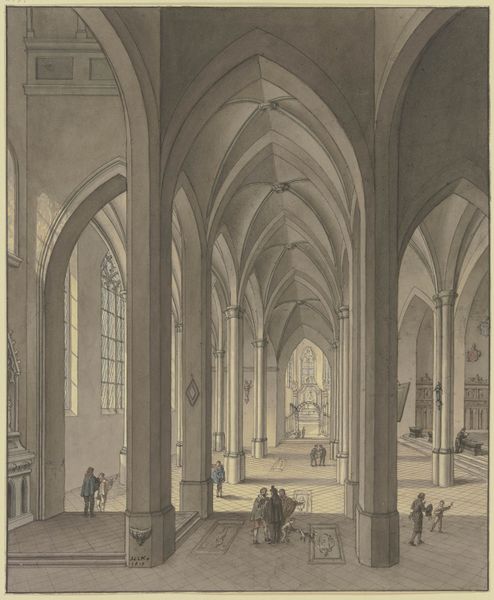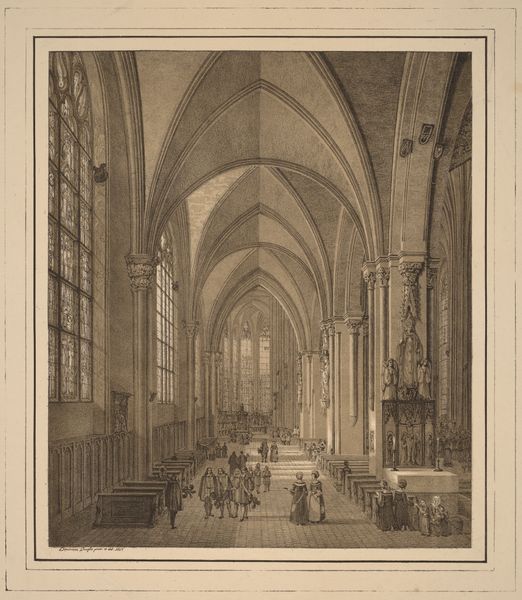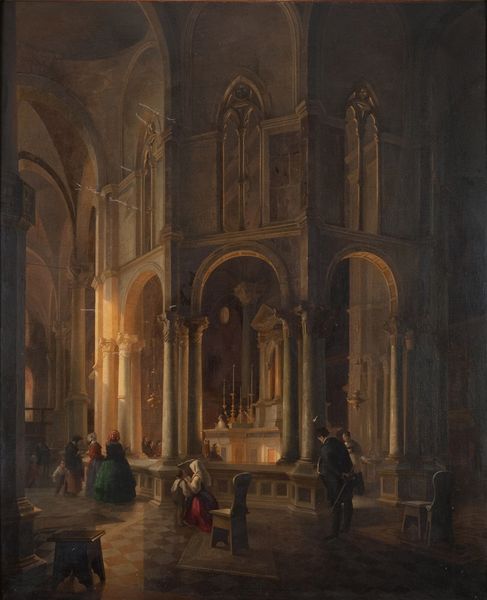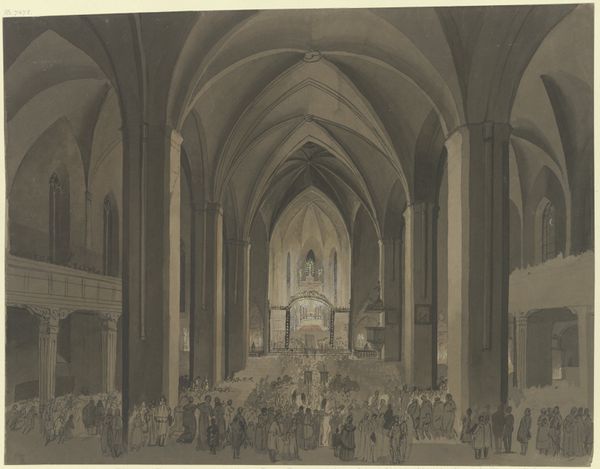
painting, wood
#
baroque
#
painting
#
sculpture
#
perspective
#
chiaroscuro
#
monochrome photography
#
wood
#
genre-painting
#
monochrome
#
ruin
Dimensions: 49 cm (height) x 66 cm (width) (Netto)
Editor: So, this is "Interior of a Gothic Church by Night," painted by Peeter Neeffs the Elder sometime between 1634 and 1637. It’s a painting, currently housed at the Statens Museum for Kunst. What strikes me immediately is the dramatic contrast between light and shadow, and the way that light seems to both illuminate and obscure. How do you interpret this work? Curator: That chiaroscuro is absolutely key. It's not merely a visual technique, but a representation of the era’s deeply rooted tensions. Consider the church itself—a symbol of immense power, yet existing within a society grappling with religious conflict and social inequality. Do you think the limited light, and the shadows, might also suggest a questioning of that power? Editor: I see what you mean. It’s like the painting is hinting at something hidden, or perhaps, something sinister lurking beneath the surface of religious grandeur. The figures within the church seem small and almost insignificant in comparison to the architecture, which makes me think of their roles within the hierarchy of the time. Curator: Exactly! Neeffs isn't just depicting a beautiful space. He's subtly commenting on the individual's place within these imposing structures, both physically and socially. How does the perspective influence your reading of that? Editor: The linear perspective really draws you into the scene, but it also emphasizes the vastness and coldness of the interior. Almost as though one were trapped by rules of conduct or forced to keep one’s place… Curator: Precisely. Now, thinking about contemporary relevance, consider how institutions still operate, often preserving unequal systems. How can reflecting on paintings like this one help us better see injustice, be aware of different groups and classes within systems that appear stable? Editor: This makes me wonder if Neeffs' choice of a nighttime scene was deliberate – to draw attention to what is usually unseen, or perhaps, ignored in plain sight. Curator: A great insight! Thinking about it through the lens of power and representation changes how we see it. Editor: Definitely! I initially focused on the aesthetic, but now, I see the painting as a powerful commentary on the social dynamics embedded within religious institutions. Curator: And hopefully, this deeper reading will enrich not just how we see the past, but how we act in the present.
Comments
No comments
Be the first to comment and join the conversation on the ultimate creative platform.
